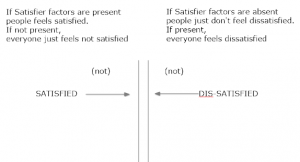One of the biggest ongoing questions I get from managers is “how do I motivate this person?”
Occasionally this may relate to a specific person but it is almost always indicative that the manager or business owner doesn’t yet understand what motivates people at work. This understanding is crucial or you will quickly get in a tailspin of frustration or offering carrots. And you will wonder why your generosity isn’t taking effect.
Early in my career, as I was growing teams all over Australia and New Zealand I was taught the following principles which I recognised to be keys. And putting them into practice proved to be incredibly rewarding, people were light to manage. Performance and loyalty was high, and attrition was low…. until these principles were violated. The following is an outline of these valuable insights, starting with the key areas we will cover:
Leading for Performance
- What gets people excited about their work? (i.e. they wouldn’t think of arriving late)
- Practical leadership ideas that can be learnt
- Some practical changes you can make in your leadership style
Traditional vs. empowered Organisations
- What motivates people?
- How traditional organizations demotivate
- How empowered organizations
Part 1 – What Motivates People
Abraham Maslow’s Hierarchy of Needs
Man has two sets of needs: to protect the physical (avoid pain), and to grow psychologically.
Needs must be satisfied in the given order. Aims and drive always shift to next higher order needs.
Levels 1-4 are deficiency motivators; level 5 (implying 6-8), are growth motivators and relatively rarely found. The thwarting of needs is usually a cause of stress, and is particularly so at level 4.
Examples:
- You can’t motivate someone to achieve their sales target (level 4) when they’re having problems with their marriage (level 3).
- You can’t expect someone to work as a team member (level 3) when they’re having their house re-possessed (level 2).
Causes of Job Satisfaction || Causes of Job dissatisfaction
(Dr Frederick Herzberg, Harvard Business School “The Motivation to Work”, 1959)
There are certain characteristics in organisations which cause dissatisfaction.
Causes of Job Satisfaction – Motivator Factors
Intrinsic to the job itself
- Achievement (in the job itself)
- Recognition for achievement
- Work itself (a big potential satisfier)
- Responsibility for the job itself – involvement and power to make a difference
- Advancement
- Growth
Benefits – Motivator factors create momentum:
- Personal growth – on the inside
- Feeds itself – the more you use it, the more you feed it (auto-catalyticate)
- Long term results – no need to keep stroking for action
- Huge opportunity – limitless supply
- Inspires performance
- Strong loyalty
If these factors are active, motivation talks. Arrange the size of the challenge so a person can get an early win, early sense of achievement, early responsibility in some activity.
There is another important element that points to something ‘higher’ in the human spirit
How can we explain the examples of people who seem to be far short of self-actualising, and yet are still able to help others in a meaningful and unselfish sense?
This concept is used increasingly as an effective way to help people deal with depression, low self-esteem, poor life circumstances, etc., and it almost turns the essential Maslow model on its head: that is, by helping others, a person helps themselves to improve and develop too.
Eg. A person striving to satisfy their needs at level 3 – belongingness, seems able to self-actualise – level 5 (and perhaps beyond, into ‘transcendence’) by selflessly helping others, and at the same time begins to satisfy their own needs for belongingness and self-esteem.
The principle of giving first, before receiving, seems paradoxical but consistent through nature.
Causes of Job Dissatisfaction – Hygiene factors
External, in the job environment
‘Looking after home, e.g. a wound needs to be treated.
- Policy and administration (only take notice, irritated when things go wrong)
- Supervision – technical
- Interpersonal relations – the boss and peers. The way we relate to those who lead us (a potential hygiene disaster)
- Working conditions
- Salary and fringe benefits (vs the importance that earning market rates for talent and time involved ( x hours per week for $x p.a.)
- Status
- Job security (e.g. building, growth)
‘Benefits’ – Hygiene factors cause movement (not inwardly motivated):
- Lures and threats (e.g. salary)
- Frequent feeding (needs)
- Insatiable
- Get short term results
- Insatiable demand (the more you give the more they need) – all want what is just out of reach
- Buy compliance
- Weak loyalty (e.g. entice on salary, but when the next best offer comes along, they’re gone)
Motivator Factors is where the passion is
- Motivator factors are in the heart
- Hygiene factors are in the environment
A job with strong motivator factors inspires
Job enrichment is required for intrinsic motivation.
Sufficient challenge to utilize the full ability of the employee.
- Creative
- Innovative
- Responsible performance
Requires continuous management – working with Strengths and Talents.
A job with weak motivator factors causes obsession with hygiene factors.
There are two challenges in a business:
- To look after home, and
- To work on motivational factors – enticing loyalty by talking achievement.
Drive the engine of motivation
If the motivator factors are active, motivation talks. Arrange the size of the challenge so a person can get an early win, early sense of achievement, early responsibility in some activity.
What’s Next…
While the above is a sketchy framework, it is one of the most powerful things I ever learnt in leading many award winning, inspired and low maintenance teams that were mostly long distance.
Part 2 & 3 look at how traditional organisations de-motivate and how empowered organisations motivate. There is profound difference between the ways they are managed functionally and dynamically.
But first, we need to look at our enemy, the de-motivator model.



